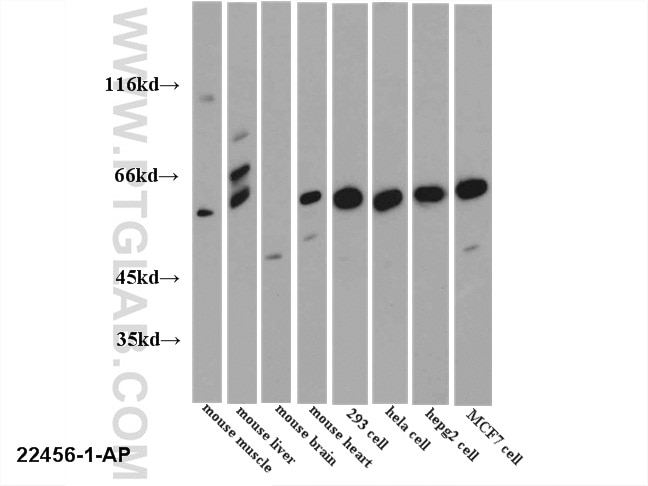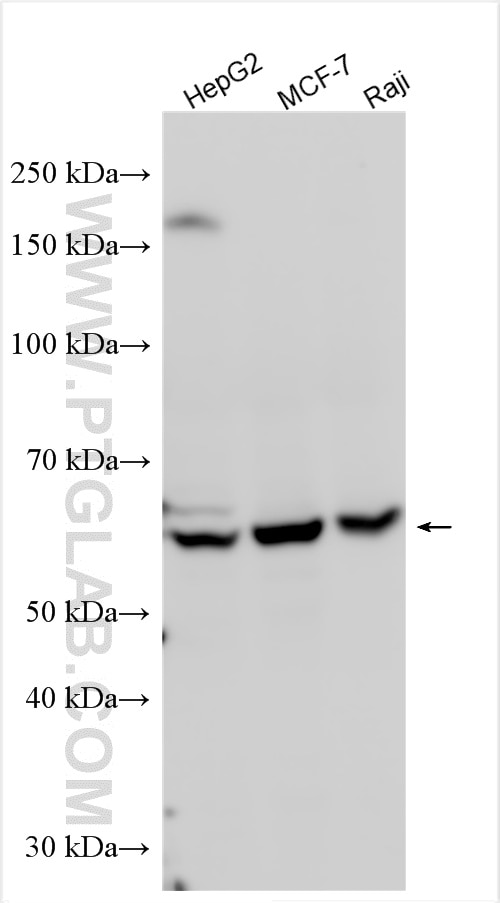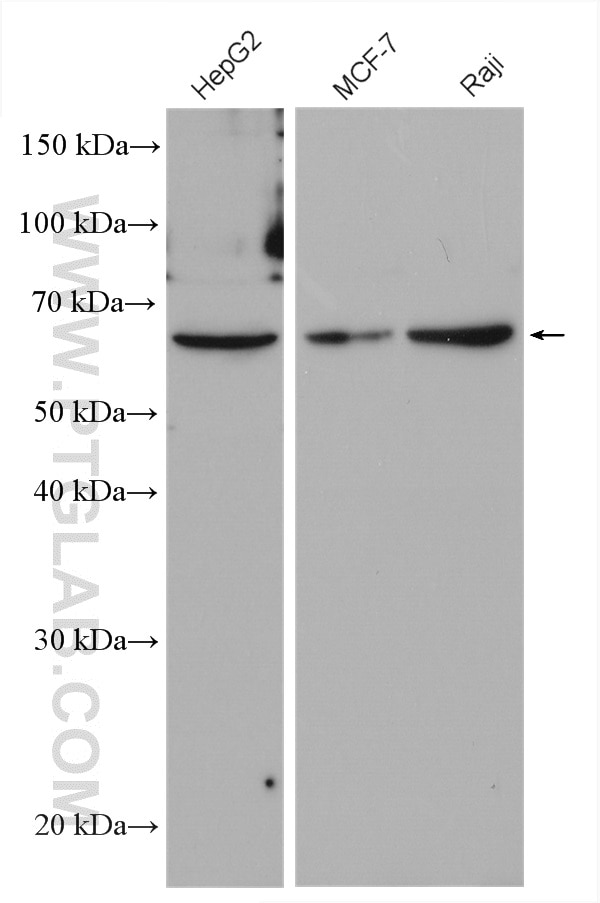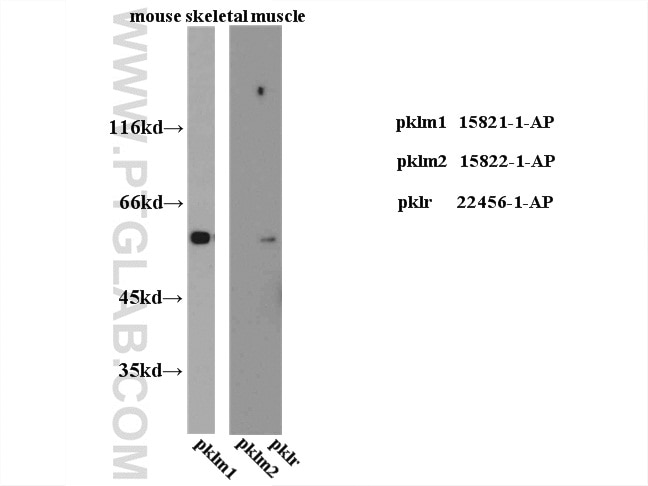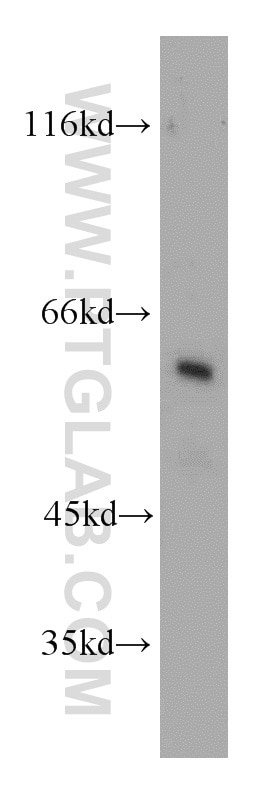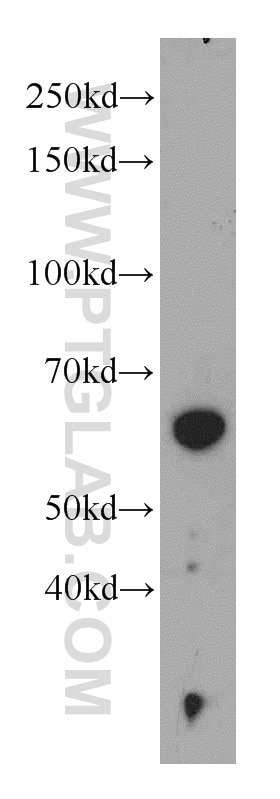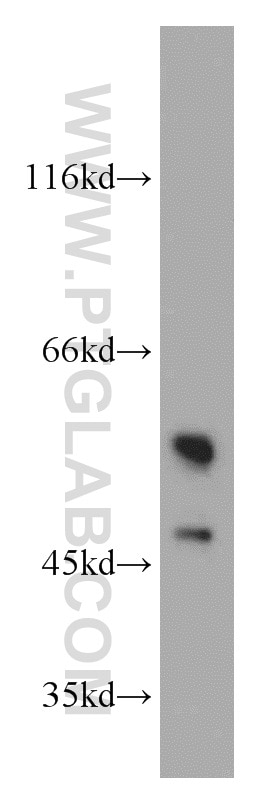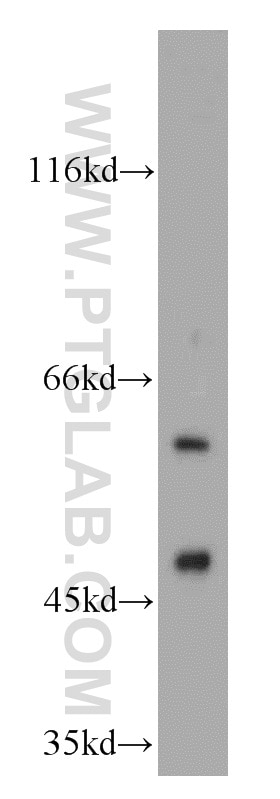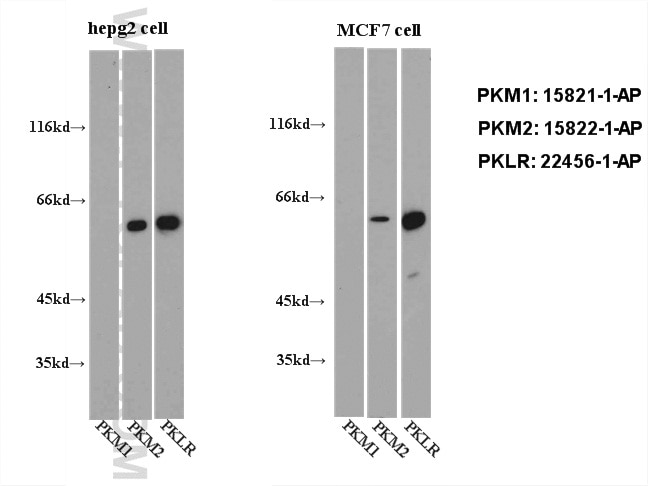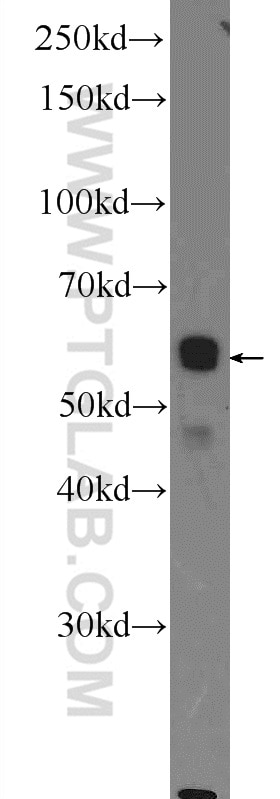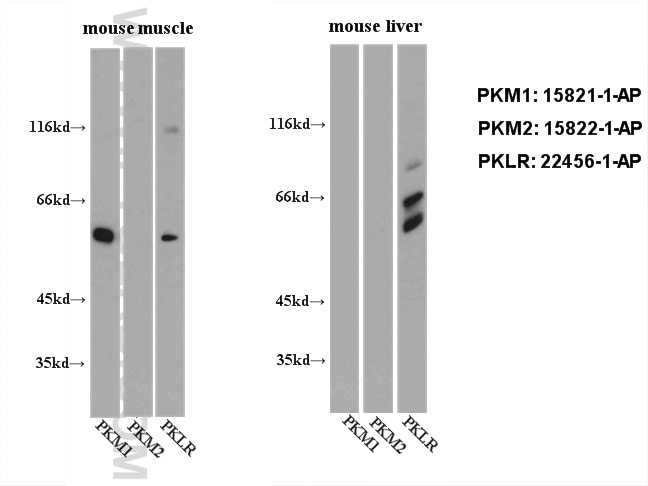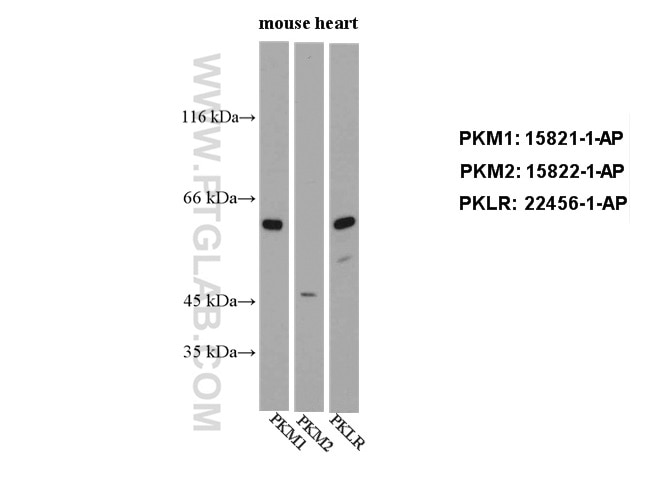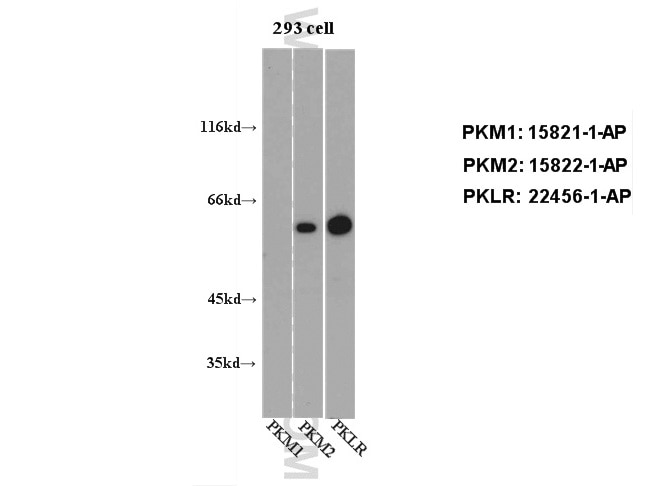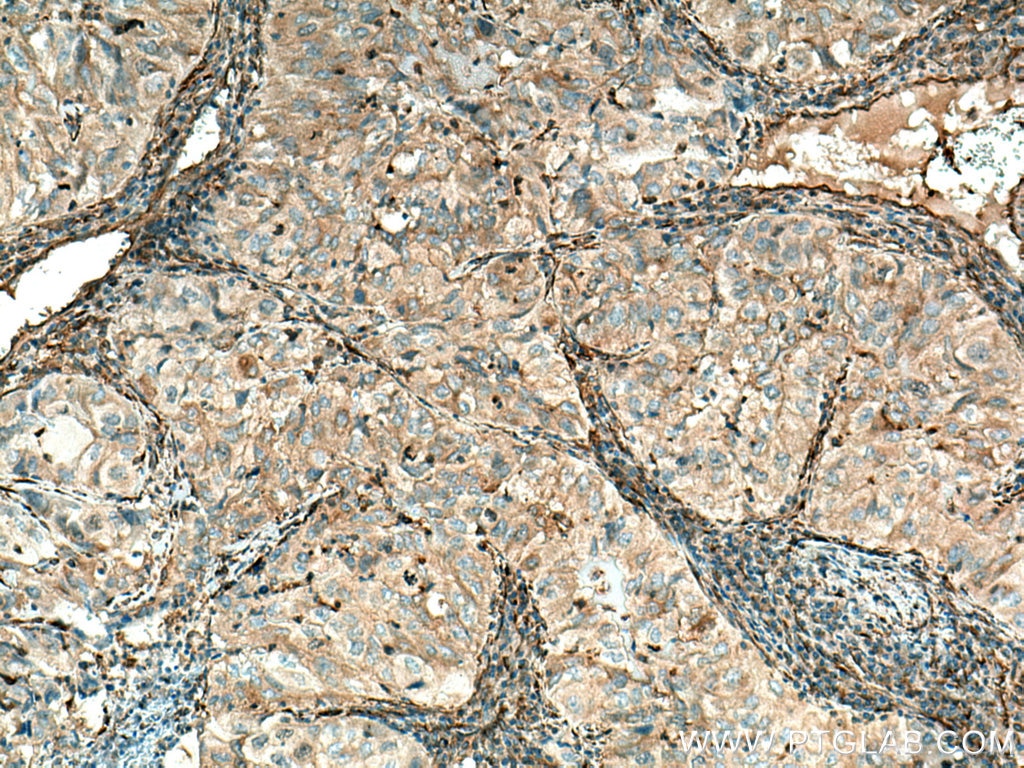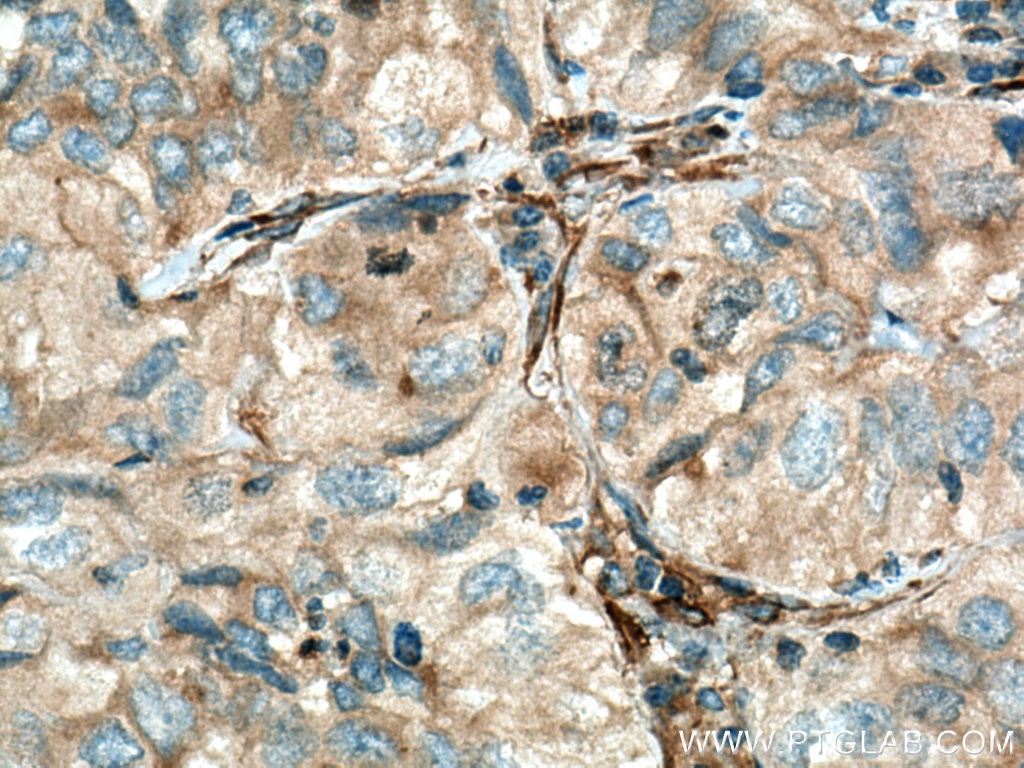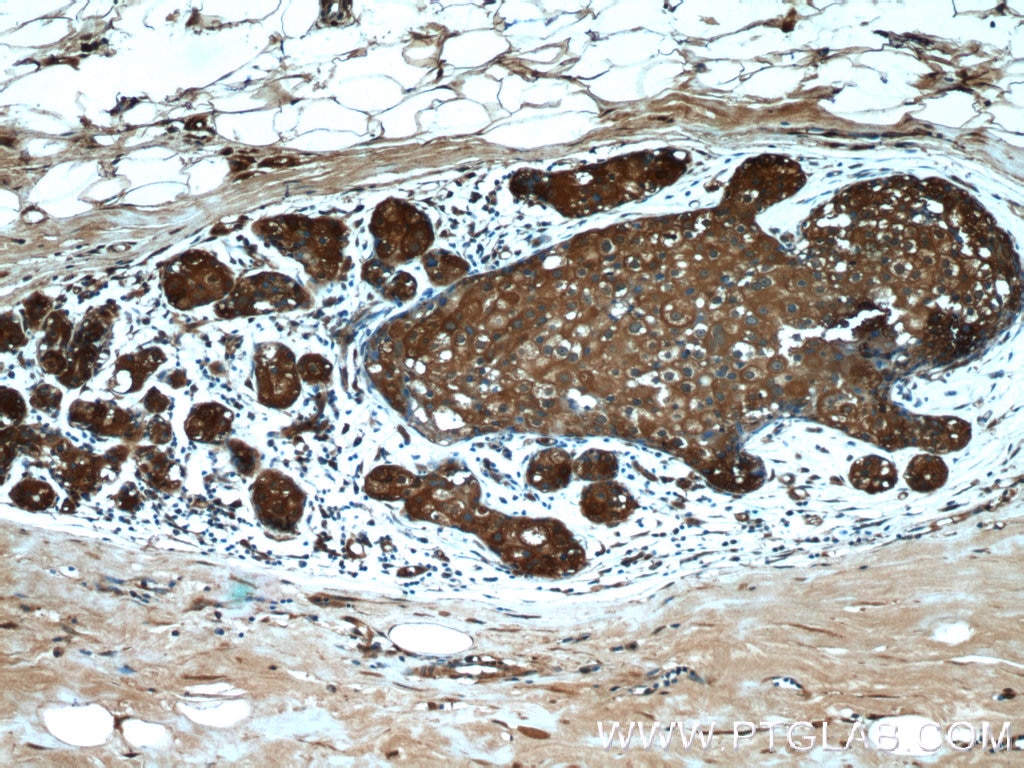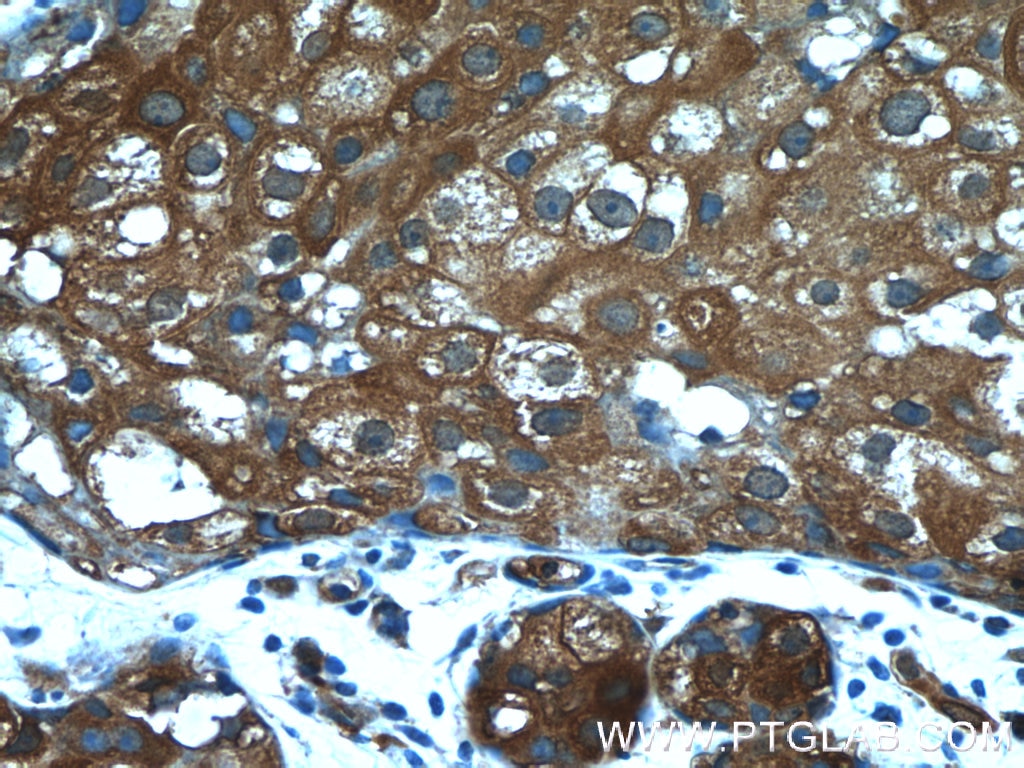- Phare
- Validé par KD/KO
Anticorps Polyclonal de lapin anti-PKLR
PKLR Polyclonal Antibody for WB, IHC, ELISA
Hôte / Isotype
Lapin / IgG
Réactivité testée
Humain, rat, souris
Applications
WB, IHC, IF, CoIP, ELISA
Conjugaison
Non conjugué
N° de cat : 22456-1-AP
Synonymes
Galerie de données de validation
Applications testées
| Résultats positifs en WB | cellules HepG2, cellules 293, cellules HEK-293, cellules HeLa, cellules MCF-7, cellules Raji, multi-cellules/tissus, tissu cardiaque de souris, tissu de muscle squelettique de souris, tissu hépatique humain, tissu musculaire/hépatique de souris, tissu rénal humain |
| Résultats positifs en IHC | tissu de cancer du poumon humain, tissu de cancer du sein humain il est suggéré de démasquer l'antigène avec un tampon de TE buffer pH 9.0; (*) À défaut, 'le démasquage de l'antigène peut être 'effectué avec un tampon citrate pH 6,0. |
Dilution recommandée
| Application | Dilution |
|---|---|
| Western Blot (WB) | WB : 1:500-1:3000 |
| Immunohistochimie (IHC) | IHC : 1:50-1:500 |
| It is recommended that this reagent should be titrated in each testing system to obtain optimal results. | |
| Sample-dependent, check data in validation data gallery | |
Applications publiées
| KD/KO | See 2 publications below |
| WB | See 15 publications below |
| IHC | See 3 publications below |
| IF | See 1 publications below |
| CoIP | See 1 publications below |
Informations sur le produit
22456-1-AP cible PKLR dans les applications de WB, IHC, IF, CoIP, ELISA et montre une réactivité avec des échantillons Humain, rat, souris
| Réactivité | Humain, rat, souris |
| Réactivité citée | rat, Humain, souris |
| Hôte / Isotype | Lapin / IgG |
| Clonalité | Polyclonal |
| Type | Anticorps |
| Immunogène | PKLR Protéine recombinante Ag17933 |
| Nom complet | pyruvate kinase, liver and RBC |
| Masse moléculaire calculée | 574 aa, 62 kDa |
| Poids moléculaire observé | 58-62 kDa |
| Numéro d’acquisition GenBank | BC025737 |
| Symbole du gène | PKLR |
| Identification du gène (NCBI) | 5313 |
| Conjugaison | Non conjugué |
| Forme | Liquide |
| Méthode de purification | Purification par affinité contre l'antigène |
| Tampon de stockage | PBS with 0.02% sodium azide and 50% glycerol |
| Conditions de stockage | Stocker à -20°C. Stable pendant un an après l'expédition. L'aliquotage n'est pas nécessaire pour le stockage à -20oC Les 20ul contiennent 0,1% de BSA. |
Informations générales
PKLR(Pyruvate kinase isozymes R/L) is also named as PK1,PKL,which is a glycolytic enzyme that catalyzes the transphosphorylation from phosphoenolpyruvate (PEP) to ADP, yielding pyruvate and ATP. It is the last step of the glycolytic pathway and is essentially irreversible.It belongs to the pyruvate kinase family and There are 4 isozymes of pyruvate kinase in mammals: L, R, M1 and M2. L type is major isozyme in the liver, R is found in red cells, M1 is the main form in muscle, heart and brain, and M2 is found in early fetal tissues.Defects in PKLR are the cause of pyruvate kinase hyperactivity (PKHYP) and pyruvate kinase deficiency of red cells (PKRD).It can form a homotetramer(PMID:11960989).
Protocole
| Product Specific Protocols | |
|---|---|
| WB protocol for PKLR antibody 22456-1-AP | Download protocol |
| IHC protocol for PKLR antibody 22456-1-AP | Download protocol |
| Standard Protocols | |
|---|---|
| Click here to view our Standard Protocols |
Publications
| Species | Application | Title |
|---|---|---|
Nat Med Pyruvate kinase M2 activation may protect against the progression of diabetic glomerular pathology and mitochondrial dysfunction. | ||
Cell Metab Multi-Tissue Acceleration of the Mitochondrial Phosphoenolpyruvate Cycle Improves Whole-Body Metabolic Health. | ||
Mol Ther Extracellular vesicle-mediated communication between hepatocytes and natural killer cells promotes hepatocellular tumorigenesis. | ||
Int J Mol Sci Loss of miR-23b/27b/24-1 Cluster Impairs Glucose Tolerance via Glycolysis Pathway in Mice. | ||
Sci Rep Up-regulation of PKM2 promote malignancy and related to adverse prognostic risk factor in human gallbladder cancer. |
